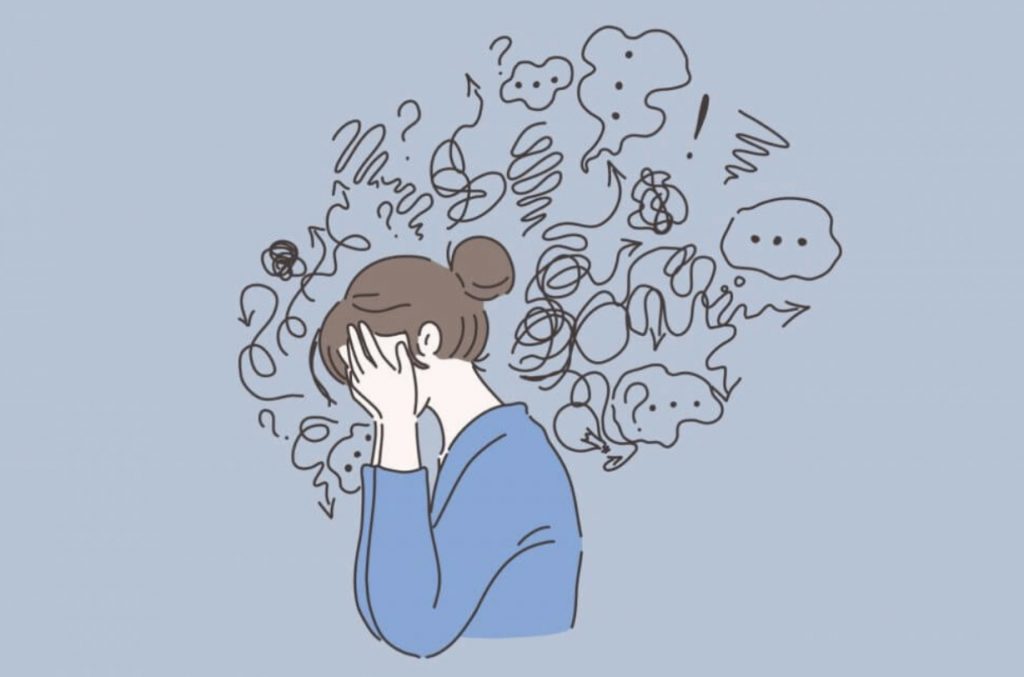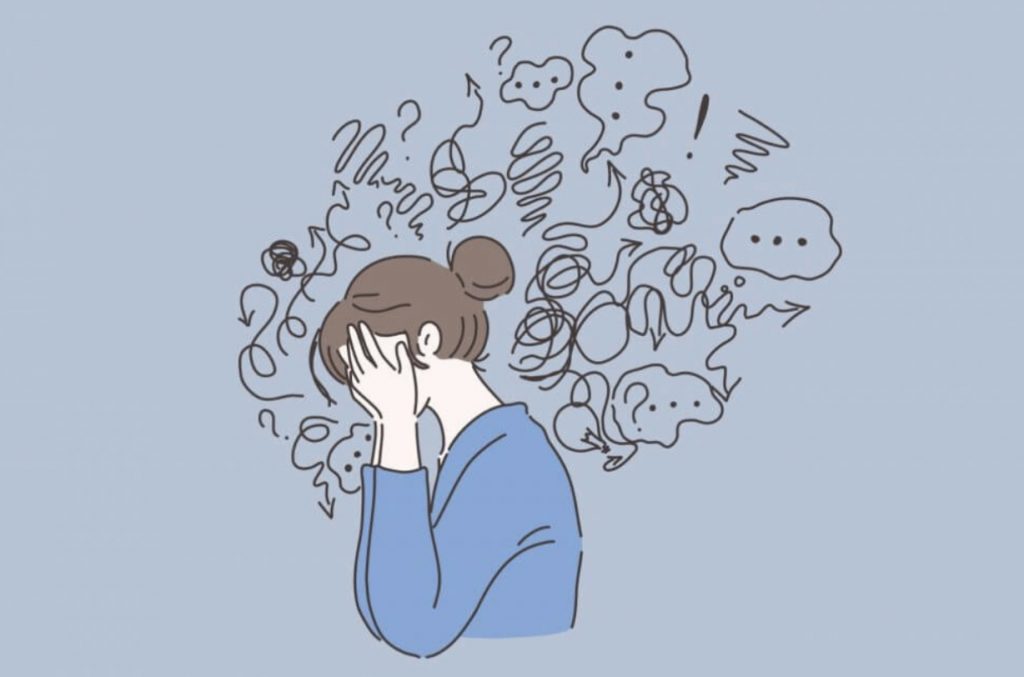Understanding Anxiety Disorders: Types, Symptoms, and Coping Strategies

Anxiety disorders are mental health conditions that affect over 300 million people worldwide. They can impact anyone, regardless of gender, age, or ethnicity. Anxiety disorders, manifest differently in each person, meaning there is no universal treatment that works for everyone.
Anxiety itself is a natural response to stress, excitement, or anticipation, and occasional feelings of anxiety are completely normal. However, when anxiety becomes persistent or excessive—interfering with daily life—it may indicate the presence of an anxiety disorder.
This blog will explore different types of anxiety disorders to help you better understand your own experiences or those of your loved ones. It will also provide practical coping strategies, equipping you with the knowledge and tools to begin calming the storm that is anxiety.

Generalised Anxiety Disorder (GAD)
Generalised Anxiety Disorder (GAD) is one of the most common anxiety disorders, characterised by persistent and excessive worry about everyday situations. Unlike occasional anxiety, which is a normal response to stress, GAD causes relentless and often irrational worry about things that others might not find concerning.
People with GAD often experience both mental and physical symptoms, including:
• Restlessness or feeling on edge
• Fatigue, even after a full night’s sleep
• Difficulty concentrating or feeling like their mind is “going blank”
• Muscle tension and headaches
• Irritability
• Trouble sleeping due to racing thoughts
Because GAD keeps the mind in a constant state of alertness, it can be mentally and physically draining. This persistent state of worry can interfere with daily activities, relationships, and overall well-being, making it difficult for those affected to relax, even in situations that don’t warrant stress.
Panic Disorder
Another anxiety disorder that often coexists with Generalised Anxiety Disorder (GAD) is panic disorder. This condition is characterised by sudden and intense panic attacks, accompanied by overwhelming fear. Many individuals describe a panic attack as feeling similar to a heart attack due to its physical symptoms.
Common symptoms of a panic attack include:
• Heart palpitations
• Excessive sweating
• Shaking or trembling
• Shortness of breath
• Dizziness or lightheadedness
Panic attacks can be an extremely frightening experience, often occurring unexpectedly and without an apparent trigger. This unpredictability can make them especially difficult to manage, leading many individuals to live in fear of their next episode.
Social Anxiety Disorder
The third type of anxiety disorder is Social Anxiety Disorder, which is characterised by an intense fear of social situations and a deep-seated worry about being judged or embarrassed.
People with social anxiety often avoid everyday interactions, such as ordering a coffee, going to the supermarket, or even walking down the street, due to excessive self-consciousness. Simple social activities can feel overwhelming, leading to isolation and distress.
Common symptoms include:
• Avoidance of social interactions
• Extreme self-consciousness and fear of judgment
• Blushing, excessive sweating, or trembling
• Nausea or dizziness in social settings
Obsessive-Compulsive Disorder (OCD)
Another anxiety disorder that is often misunderstood is Obsessive-Compulsive Disorder (OCD). It is commonly misrepresented as simply being a “neat freak,” but OCD is far more complex than a preference for cleanliness.
At its core, OCD involves persistent, unwanted thoughts (obsessions) that cause significant distress, often leading to repetitive behaviours (compulsions) performed to ease anxiety. While compulsions can involve excessive cleaning or handwashing, they can also include behaviours such as repeatedly checking locks, turning lights on and off, or following strict routines.
For those living with OCD, these intrusive thoughts can be deeply distressing—sometimes involving fears of harm coming to loved ones or catastrophic events occurring. The compulsions that follow are not about preference but rather an urgent need to relieve overwhelming anxiety.

Post-Traumatic Stress Disorder (PTSD)
Post-Traumatic Stress Disorder (PTSD) develops after experiencing or witnessing a traumatic event, such as physical or emotional abuse, a serious accident, natural disasters, or military combat.
Common symptoms of PTSD include:
• Flashbacks – Reliving the traumatic event as if it’s happening again
• Nightmares – Disturbing dreams related to the trauma
• Severe anxiety – Intense fear, panic, or hyper-vigilance
• Emotional numbness – Feeling detached, disconnected, or unable to experience positive emotions
PTSD can affect people in different ways, and its severity can vary. While some individuals may experience symptoms shortly after the event, others might not develop PTSD until months or even years later
While each anxiety disorder is different, there are some universal techniques that can help manage symptoms and reduce overall anxiety.
One of the most effective strategies is mindfulness, which involves simple practices that help you slow down and stay present in the moment. Here are a few of our favourites:
• Deep Breathing Exercises (4-7-8 Technique)
This technique helps regulate breathing and reduce anxiety, especially during panic attacks.
Simply:
• Inhale for a count of 4
• Hold for a count of 7
• Exhale slowly for a count of 8
Focusing on your breath helps calm your nervous system and ease anxious feelings.
Meditation allows you to clear your mind and step away from intrusive thoughts that contribute to anxiety.
In addition, grounding techniques also help bring you back to the present moment. A great method is the 5-5-5 technique, where you focus on your senses by listing:
• 5 things you can see
• 5 things you can hear
• 5 things you can touch
This technique helps shift focus away from anxious thoughts and back to reality.
Another valuable technique is to keep a thought journal, to identity times or situations where you feel the most anxious. This may help you in the future when you’re in those situations again to challenge the ideas.
While mindfulness techniques can provide temporary relief, they don’t necessarily address the root causes of anxiety. This is where Cognitive Behavioural Therapy (CBT) comes in.
CBT is a well-established therapy that helps individuals challenge negative thought patterns and replace them with more balanced, rational thinking. It’s essentially about learning to “fight back” against anxiety by reframing intrusive thoughts and breaking the cycle of fear and avoidance. Whether practiced with a therapist or independently, CBT can be a powerful tool in managing anxiety long-term.
Combining mindfulness techniques with cognitive behavioural strategies can provide a well-rounded approach to coping with anxiety and regaining control over your mental well-being.
The final strategy focuses on everyday life. People often underestimate the power of lifestyle changes in helping their mental health. Exercise, for example, has been proven to boost mood and reduce anxiety. This doesn’t have to mean a long run or an intense gym session, as we know that isn’t everyone’s forte. A walk in the sunshine or even dancing around your room in your PJs can be a great way to reduce anxiety and increase serotonin (the “happy hormone”).
In addition, getting enough fresh air and maintaining a balanced diet are key to boosting overall mood, which in turn helps reduce anxiety. For more action-based disorders, such as OCD and social anxiety, exposure therapy can also be an effective tactic to reduce your fears. Gradually exposing yourself to feared situations can help you realise that your thoughts are not facts. For example, ordering a coffee for yourself at a café or challenging your obsessive thoughts and actions can be great for understanding that nothing bad will happen in these situations. These activities can be particularly daunting, so practicing deep breathing or bringing a loved one along with you can also be helpful.
The most important of all these techniques is to seek support. This could involve reaching out to friends or family and telling them you’re struggling or signing up for therapy. If that feels a bit daunting, the app Budii.me is a great starting place. It can be a helpful platform to note down your triggers and talk about how you’re feeling. Sometimes, expressing your feelings can significantly reduce anxiety, and Budii.me is a great place for that.
Anxiety disorders can be difficult to navigate, and they affect everyone differently. However, with the right help and support, you can manage these symptoms effectively. Try these techniques to alleviate your symptoms, but don’t hesitate to reach out for help if you need it.
Remember, you are not alone, and support is always available. There are resources below if you need immediate help
Join us next Monday where we will be covering Mood disorders such as depression.
• Mind – https://www.mind.org.uk
• Samaritans – Call 116 123 or visit https://www.samaritans.org
• Rethink Mental Illness – https://www.rethink.org